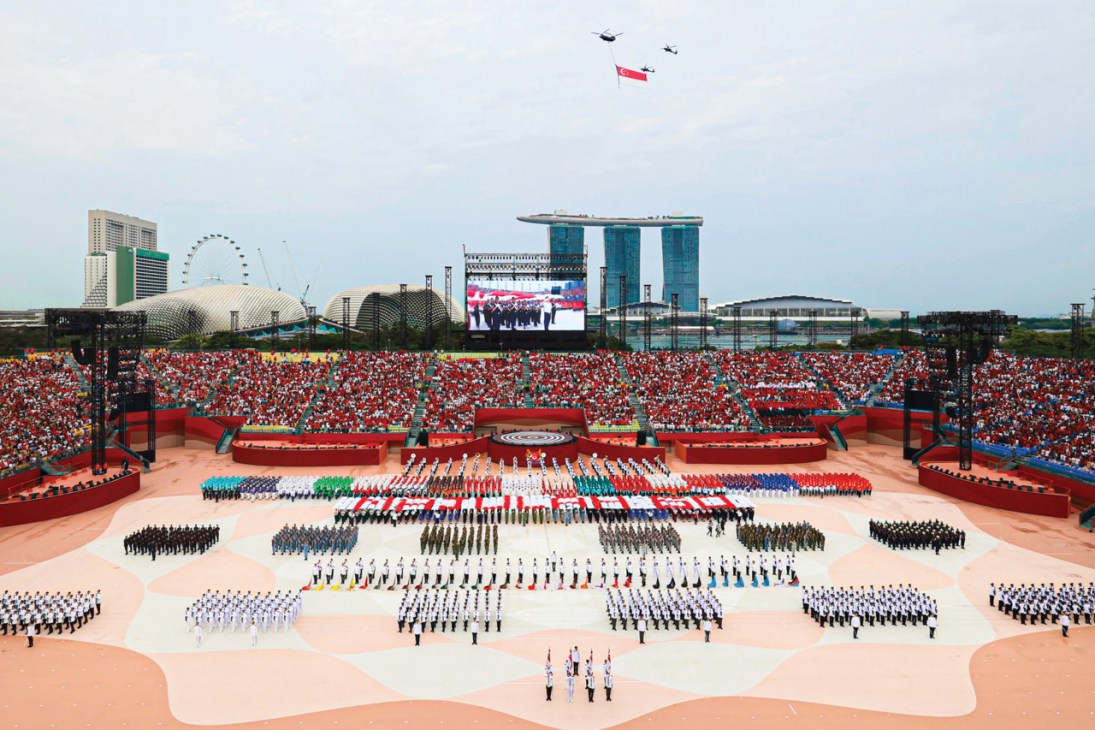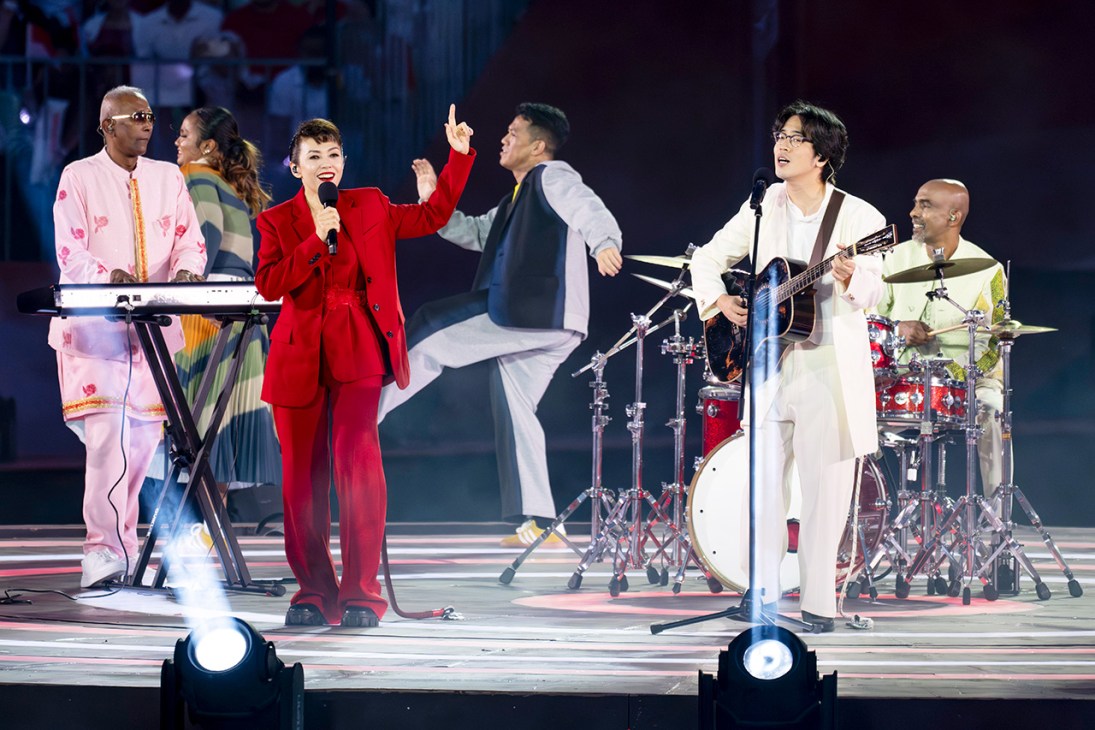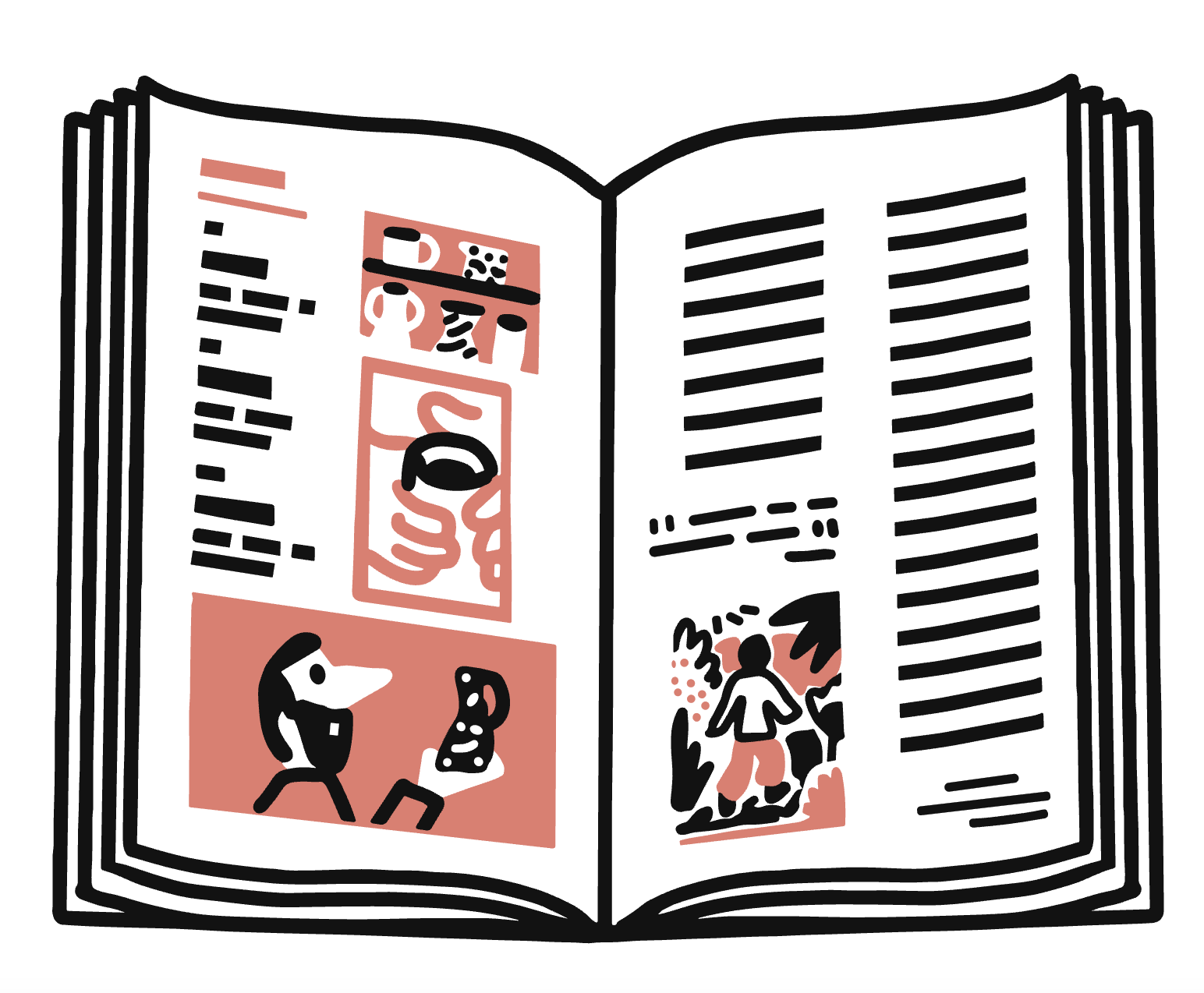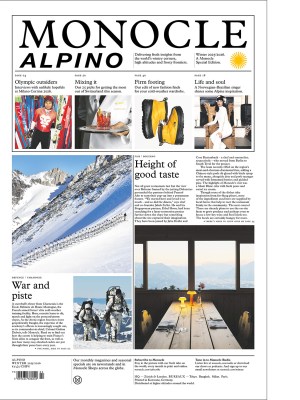This year’s evolution of Singapore’s National Day song shows how the young country’s identity is shifting
Singaporeans belt out a new National Day anthem every year, but what do these patriotic tunes tell us about the city-state’s place in the world?
Singapore turns 60 years old on 9 August. To celebrate, 27,000 people will gather at the Padang, a downtown athletics field close to Parliament House, for the annual National Day Parade. As the country’s main event of the year, the parade is packed with two hours of pomp and pageantry, complete with aerial displays, elaborate props and epic fireworks. The highlight of the show for many Singaporeans, though, will be musicians Charlie Lim, Kit Chan and The Island Voices belting out this year’s National Day song, “Here We Are” – listen below:
Singapore has unveiled a new National Day anthem annually for almost three decades, ranging from infectious pop hits to stirring indie ballads. Local artists compete fiercely to land the coveted gig, with only one demo making the cut. “It’s like scoring the Super Bowl halftime show,” says Golden Melody award-winner Chan. The tradition blends career-making opportunities for homegrown talent with Singapore’s distinctive approach to nation-building.

The government began commissioning songs in the 1980s as one of many ways to unite a young nation made up of Chinese, Indian and Indonesian economic migrants. At that time, the city-state was undergoing major structural changes, with scores of citizens being moved from their existing communities into public housing, where they were suddenly made to live among strangers. “Community singing” was viewed as a key instrument in promoting unity and camaraderie, including Singapore’s founding father and first prime minister. “Lee Kuan Yew believed that there was something about singing together that drew out the spirit of people and enhanced the sense of community,” says Lim Siong Guan, the Ministry of Defence’s permanent secretary in the 1980s.
Though the Culture Ministry’s Songs of Singapore project was meant to promote locally written and composed songs, the first tune that struck a chord with the country was written by Hugh Harrison, a Canadian creative producer working for McCann Erickson, the appointed advertising agency for the campaign. Released in 1984, “Stand Up for Singapore” went from being a commercial jingle to a surprise hit and an official national song. Harrison went on to pen two more National Day classics and his trio of tunes established a formula for a successful release: easy to sing along to, centred around building trust and, most importantly, multiple mentions of “Singapore”.
Harrison’s final song, “We Are Singapore” (1987), begins with the line: “There was a time when people said/that Singapore won’t make it, but we did/there was a time when troubles seemed too much/for us to take but we did.” As the country had come out of an economic recession, these uplifting songs hit all the right notes.
But it was Dick Lee’s 1998 masterpiece, “Home”, that truly captured hearts. Written while homesick in Hong Kong, this tender ballad about longing for Singapore remains a poignant tribute to the country. The single, performed by Chan, transformed the annual tradition from feel-good anthems to deeply personal art.
The melancholic tune, which begins on a downcast note (“Whenever I am feeling low/I look around me and I know/there’s a place that will stay within me”) before swelling to a rousing chorus, was nothing like the typically upbeat nationalistic numbers. Rather, the song shared more in common with the Canto-pop tunes being produced at the time in Hong Kong. Chan, who, like Lee, was working abroad, shares why it resonates so deeply. “Two homesick people captured the perspective of someone who’s not in Singapore but loves the place and feels connected to it.”
Timing was also important. “Home” was released in the aftermath of the 1997 Asian financial crisis – a turbulent time for many countries in the region. It became the first National Day song to be translated into Mandarin and was even performed during Lee Kuan Yew’s funeral in 2015.

Chan will take to the stage again on 9 August to partner with Lim and The Island Voices on “Here We Are”. In a polarised world, Singaporeans will be urged to see how “our differences will make us whole.” Compared to the syrupy, propaganda-laced lyrics of the 1980s, this year’s anthem is a marker of how modern Singapore has moved on from nation-building to allow musicians the space to grapple with the complexities of identity.
“I tried to capture the zeitgeist of where we are amid the tensions and heartbreak in the world, while balancing this with a sense of pride,” says Lim, who co-wrote the song with musician Chok Kerong.
When the verses of “Here We Are” ring out around the Padang on Saturday evening, backed up by a chorus of dignitaries and guests packed into temporary stands, one word will be noticeably absent. This year, “Singapore” isn’t mentioned in the song – not even once.


